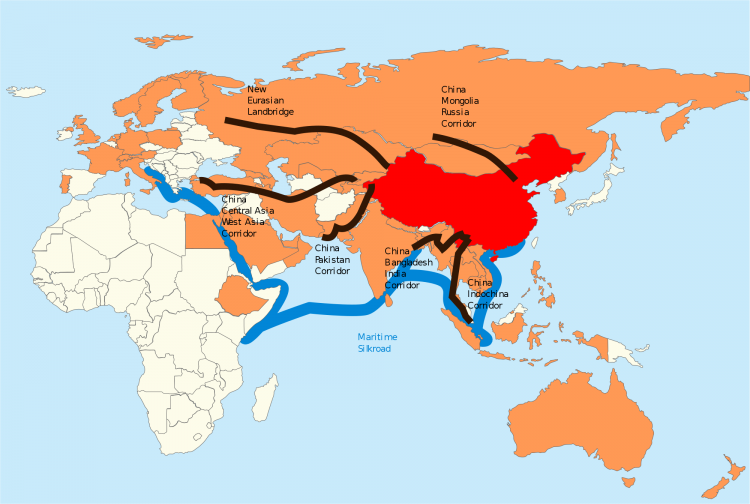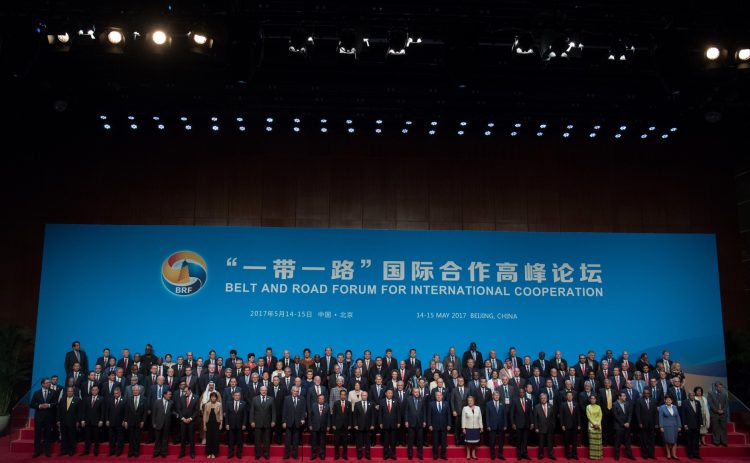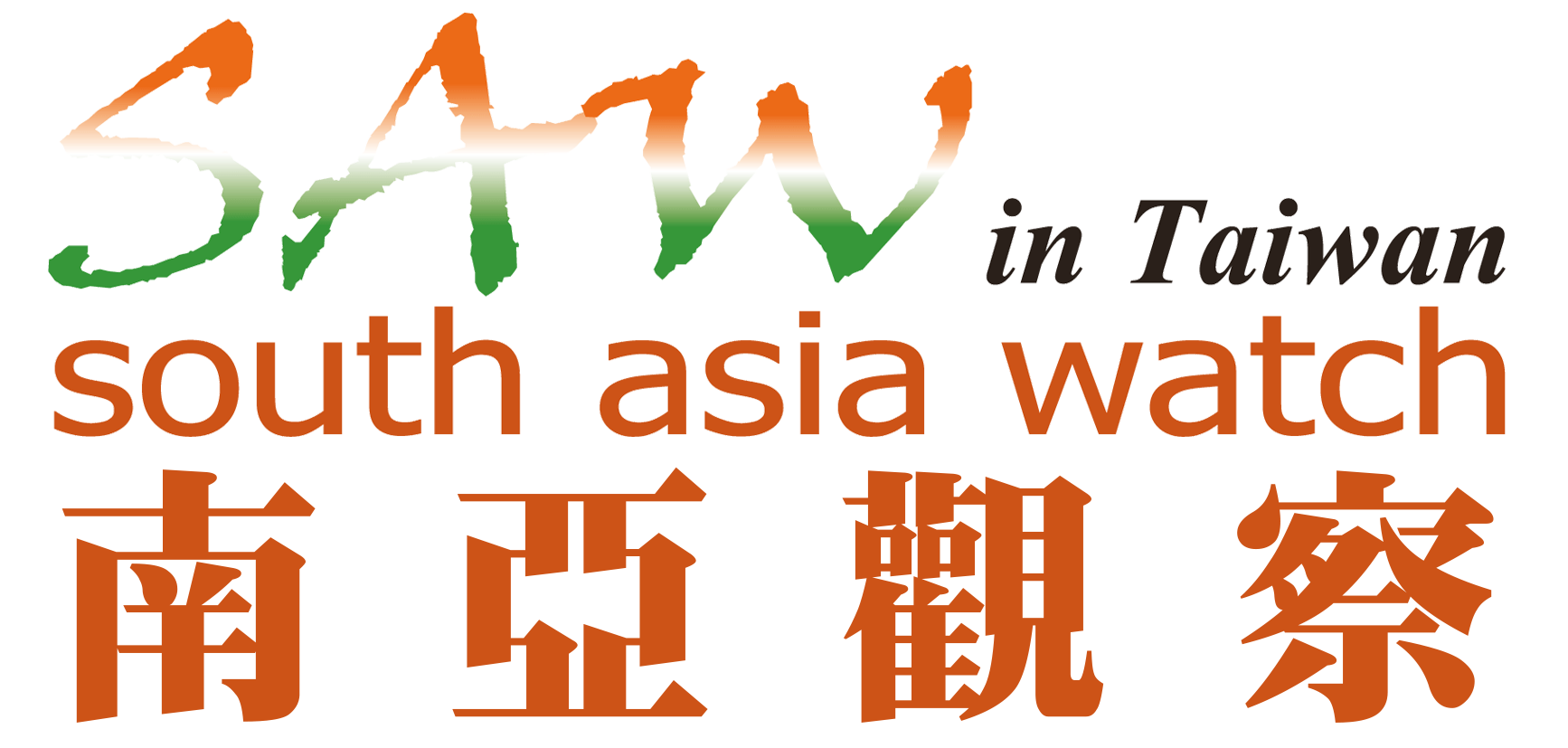Jabin T. Jacob/印度國家海事基金會研究員 (林洺宥 譯)

中國的「一帶一路倡議」(BRI)進行了五年,數年間便將觸角擴展到亞洲,非洲和歐洲。然而,各界逐漸注意到該政策牽涉到的透明性、經濟可行性和目標。本文從印度觀點,分析BRI對南亞的影響。
中國共產黨總書記兼中國國家主席習近平於2013年9月在哈薩克的演講中發表「絲綢之路經濟帶」(Silk Road Economic Belt , SREB),[1]在同年十月於印尼雅加達的演講中宣布「21世紀海上絲綢之路」(21st Century Maritime Silk Road, MSR)。[2]從此之後,BRI遍布三大洲的數個國家,而且幾乎所有的外交政策都被貼上「BRI」的標籤。
「一帶一路」在南亞
關注中國政經狀況的觀察家認為,中國的外交政策沒有任何一項不是來自國內因素的推動,或是想帶來中國國內的影響, BRI也不例外。 BRI有助於減少中國境內基礎設施發展過度和不必要的投資,並將過剩的產能轉移到境外有實際需求的地區,特別是周遭地區。
中國的言論與實踐之間存在相當大的差距。北京經常聲稱BRI對所有參與者是雙贏,但南亞的一些情況已經證實並非如此。雖然中國努力塑造BRI是滿足鄰國發展需求的計畫形象,但來自參與國的報告,顯示出債務陷阱的問題、條款不透明、涉嫌賄賂在地國政府官員、使用中國勞工以及使用老舊、高污染技術等。[3]
中國透過主辦的各種會議和民間交流,在南亞地區大肆宣傳BRI。中國政府與黨機器投入大量的精力和資金,透過在南亞國家的大使館、領事館,積極地向各國中央政府、地方政府、政黨、知識分子、企業家和學生,溝通及推動中國的觀點。
很清楚的,習近平和中國共產黨正在對世界其他地區推動中國模式的發展,是一帶一路的最終目的,但這似乎與印度試圖推廣以民主責任促進經濟發展和成長的模式相對立。
印度的回應
印度學界、戰略界和政府部門,從一開始便認為BRI不僅攸關經濟,更是為了達成更大的政治和戰略目標。[4]中國一直試圖淡化印度對古絲路的貢獻,同時推廣所謂的「新絲路」,並將絲路的過去和現在描繪為由中國獨自主導。雖然中國繪製的地圖指出印度位於一帶一路的路徑上,但任何中國對BRI的討論中,特別在南亞區域,很少承認印度在經濟和政治方面的重要性。
不過,印度對BRI的抗拒,嚴重到北京不得不在某種程度上重新思考原先的做法。印度政府可能是第一個指出BRI諸多缺點的國家,外交部發言人在一份簡短的文件中說明為什麼它沒有參加2017年5月北京「一帶一路」倡議論壇的原因。 印度外交部的聲明強調BRI出現的透明度、環境保護、經濟可行性和技術轉移種種問題。[5]儘管如此,中國在回應印度提出的問題時,總是試圖忽視或一語帶過。

筆者認為BRI是中國自清朝以來提出最像「大戰略」的東西。中國在習近平的集權領導下,是12兆美元的經濟體、擁有相當大的軍事力量和龐大的外交使團,試圖在BRI的平台上強化維持和保護海外利益的動作,並推動發展與政治的中國模式。
對於印度政府官員,特別是外交人員,以及其他南亞國家來說,斯里蘭卡的中國經驗很有參考價值。斯國的拉賈帕克薩(Mahinda Rajapaksa)政權支持所有印度反對的中國計畫。新德里多次指出斯里蘭卡一定會發現這些計畫的不永續。的確,拉賈帕克薩的繼任者最終不得不放棄斯里蘭卡南部的漢班托塔港以及周圍數千英畝的農田,並在2017年向中國人提供99年的租約。[6]
即便是中國的「全天候夥伴」巴基斯坦,也從政黨、省政府、經濟學家和媒體,甚至是商人和企業家等各種管道,收到針對中巴經濟走廊(China-Pakistan Economic Corridor ,CPEC)的批評。[7]
不能忽視的是,南亞的問題和中國大規模進入該區,一大部份歸諸印度自身的失敗。除了幾十年來對小鄰國的「老大哥」姿態以外,印度多次無法完成承諾的不良記錄,顯示印度在速度和規模方面還有很多不足。
然而,這並不意味著印度該做的事或中國打算要做的事情不多。印度藉由與美日在各個領域的合作,才正要開始回應中國。但對抗中國的宣傳,還有中國發展模式對印度和其他民主國家的影響,才是真正的挑戰。中國在南亞的勢力也不太可能線性發展,它將面臨許多BRI地主國的反彈。南亞複雜的遊戲才正要開始。
關於作者

鄭嘉賓(左圖)是新德里國家海事基金會兼職研究員(Adjunct Research Fellow at the National Maritime Foundation)、中國報告(China Report)副主編。他曾是德里中國研究所(Institute of Chinese Studies)的研究員和助理主任。鄭嘉賓擁有中國研究的博士學位,並曾在台灣、法國和新加坡擔任學生、研究員及教師。他的研究興趣包括中國與南亞的關係、中國的「一帶一路」倡議、中印邊境地區以及中國中央與地方的關係。他曾擔任以下學校的博士委員會成員,果阿海軍戰爭學院(Naval War College, Goa)、孟買大學(University of Mumbai)和古瓦哈提的印度理工學院(Indian Institute of Technology, Guwahati)。
他的著作見於:https://indiandchina.com/
推特ID:@jabinjacobt
譯者林洺宥:國立中興大學國際政治所碩士生
原文摘要:
China’s Belt and Road Initiative and its Implications for South Asia
Abstract
The Chinese Belt and Road Initiative (BRI) has completed five years and in that time it has expanded over Asia, Africa and Europe. However, it has also been accompanied by growing concerns about the transparency, economic feasibility and objectives of its projects. This brief analysis looks at the impact of and implications of the BRI on South Asia from an Indian perspective.
It has been five years since China launched the Belt and Road Initiative (BRI). Communist Party of China (CPC) General Secretary and Chinese President Xi Jinping announced the Silk Road Economic Belt (SREB) in a speech in September 2013 in in Kazakhstan[8] and the 21st Century Maritime Silk Road (MSR) in a speech to the Indonesian Parliament in Jakarta in October the same year.[9] In this period, BRI projects have spread over a few score countries on three continents and practically everything these days in terms of a foreign policy is being branded with the BRI label.
[1] Ministry of Foreign Affairs, the People’s Republic of China. 2013. ‘President Xi Jinping Delivers Important Speech and Proposes to Build a Silk Road Economic Belt with Central Asian Countries’, 7 September, http://www.fmprc.gov.cn/mfa_eng/topics_665678/xjpfwzysiesgjtfhshzzfh_665686/t1076334.shtml
[2] Wu Jiao and Zhang Yunbi. 2013. ‘Xi in call for building of new “maritime silk road”’, China Daily, 4 October, http://www.chinadaily.com.cn/china/2013xiapec/2013-10/04/content_17008913.htm
[3] Hurley, John, Scott Morris, and Gailyn Portelance. 2018. ‘Examining the Debt Implications of the Belt and Road Initiative from a Policy Perspective’, Center for Global Development, CGD Policy Paper, 121, March, https://www.cgdev.org/sites/default/files/examining-debt-implications-belt-and-road-initiative-policy-perspective.pdf and Jacob, Jabin. T. 2017. ‘China’s Belt and Road Initiative: Perspectives from India’, China & World Economy, Vol. 25, No. 5, September-October, 78-100.
Jacob, Jabin. T. 2017. ‘China’s Belt and Road Initiative: Perspectives from India’, China & World Economy, Vol. 25, No. 5, September-October, 78-100.
[5] Ministry of External Affairs, Government of India. 2017. ‘Official Spokesperson’s response to a query on participation of India in OBOR/BRI Forum’, Media Briefings, 13 May, http://www.mea.gov.in/media-briefings.htm?dtl/28463/official+spokespersons+response+to+a+query+on+participation+of+india+in+oborbri+forum
[6] Abi-Habib, Maria. 2018. ‘How China Got Sri Lanka to Cough Up a Port’, The New York Times, 25 June, https://www.nytimes.com/2018/06/25/world/asia/china-sri-lanka-port.html
[7] See Jacob, Jabin. T. 2017. ‘China’s Belt and Road Initiative: Perspectives from India’, China & World Economy, Vol. 25, No. 5, September-October, 78-100 and Jacob, Jabin. T. 2017. ‘Deciphering the Numbers: Employment in the China-Pakistan Economic Corridor’, E-International Relations, 22 August, http://www.e-ir.info/2017/08/22/deciphering-the-numbers-employment-in-the-china-pakistan-economic-corridor
[8] Ministry of Foreign Affairs, the People’s Republic of China. 2013. ‘President Xi Jinping Delivers Important Speech and Proposes to Build a Silk Road Economic Belt with Central Asian Countries’, 7 September, http://www.fmprc.gov.cn/mfa_eng/topics_665678/xjpfwzysiesgjtfhshzzfh_665686/t1076334.shtml
[9] Wu Jiao and Zhang Yunbi. 2013. ‘Xi in call for building of new “maritime silk road”’, China Daily, 4 October, http://www.chinadaily.com.cn/china/2013xiapec/2013-10/04/content_17008913.htm
